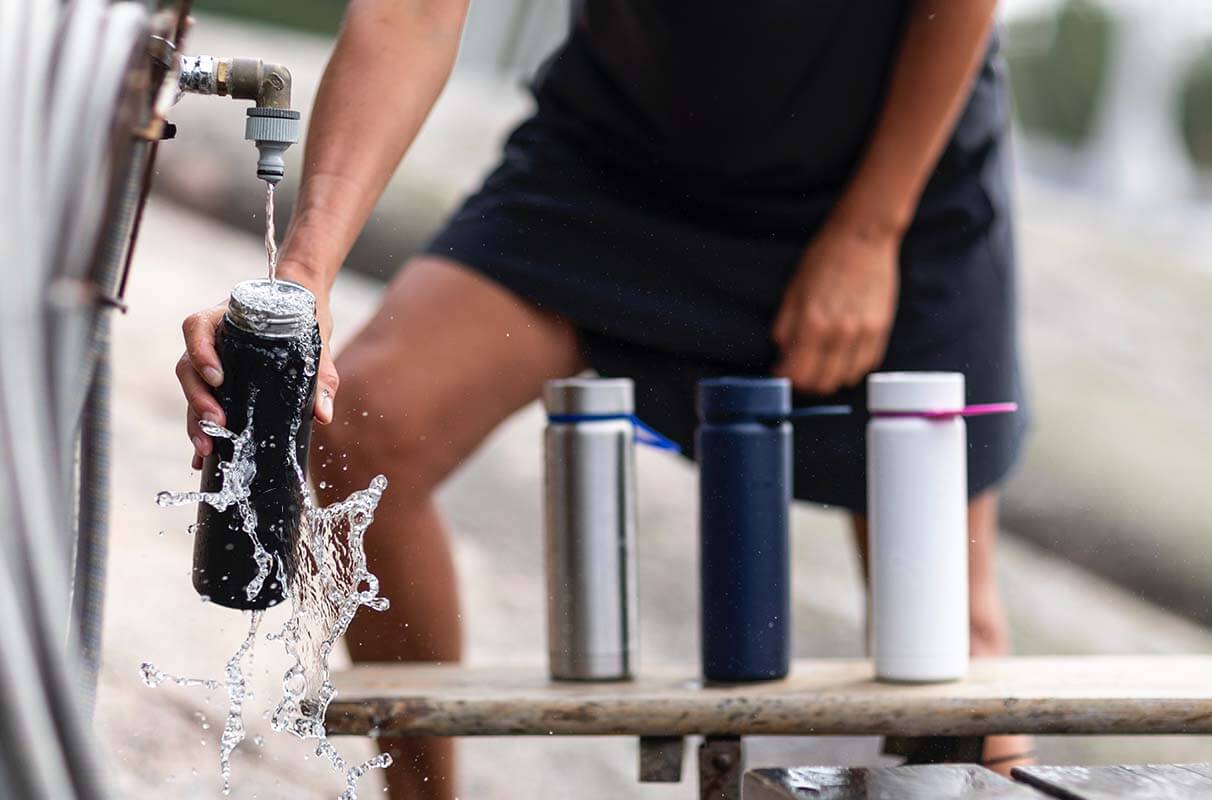There are two things to pay close attention to when you power through a tough workout: carbs and liquids. You have probably heard about how carbs provide energy needed to run, swim, bike, hike, lift weights, build strength through bodyweight training, or anything else your heart desires. Additionally, you surely are aware that replenishing your body with water during and after a sweaty workout is key.
But why do we need to eat carbs and stay hydrated? And how much and when should we be eating carbs and taking in liquids? Finally, what are some examples that combine carbohydrates and hydrating liquids?

Carbohydrates: The Most Important Macronutrient
First, carbohydrates are one of three basic macronutrients (fat and protein are the other two) that provide us with calories. This macronutrient occurs naturally in the following foods:
- Fruit
- Vegetables
- Legumes
- Whole grain products
- Rice
- Potatoes
Foods that contain carbohydrates bring a variety of important nutrients to the diet–vitamins, minerals, phytochemicals, antioxidants and dietary fiber, to name a few. Carbohydrates are the main energy source for the body. They’re broken down into sugars to act as the body’s gasoline. Athletes are advised to avoid low-carb diets for weight loss, as cutting carbs can harm performance.
How Sugar Works
Sugars come in all sorts of “flavors.” The simplest of sugars are called monosaccharides, which literally means “one sugar.” Examples of monosaccharides include glucose, fructose, and galactose. Next comes disaccharides. If you guessed that this means “two sugars,” you’re on the money. The most well-known disaccharide is sucrose, better known as table sugar. Sucrose is made up of equal parts glucose and fructose, which are glued together by chemical bonds. After disaccharides come oligosaccharides (3-10 sugars) and then polysaccharides, which translates to “many sugars.”
Our bodies convert most of the carbohydrates we eat into glucose for our muscles to use for readily available energy. In fact, glucose is what fuels our brains. Sometimes, we have more glucose available than our body needs. Excess glucose gets stored as glycogen or fat, both of which can be accessed for future energy use. The more simple the carb is, the easier it is for your body to convert it into a quick source of energy. Depending on your activity level and calorie needs, the U.S. Government’s Dietary Guidelines for Americans recommends that 45 to 65% of your daily calories should come from carbohydrates.(1) Choose foods with complex carbohydrates (see list above) over simple carbohydrates. Simple carbohydrates are found in white flour products, sodas, fruit juices, and sweets.

Carbohydrates and Sports
To sustain energy levels during a workout or race, we can turn to science for our information. Studies have shown that eating carbohydrates 3-4 hours before exercise increases liver and muscle storage of glycogen and enhances exercise performance.(2) During exercise, aim to take in about 20-35 grams for every hour. This ensures that your blood glucose levels stay stable and that your glycogen stores don’t get tapped out.
You exercise for less than an hour?
Then water is enough to quench your thirst without additional liquid carbs.
The right way to hydrate while exercising
This brings us to to hydration. Water is necessary for basic cellular function and is why the US Academies of Science, Engineering, and Medicine recommend drinking between 91 and 125 ounces (2.7-3.7 ml) of water each day.(3)
Calculate how much water you need:
Water is also critical to consume before, during, and after strenuous exercise. Drink about 17 oz. (500 ml) of water around two hours before working out. If you exercise for longer than 60 minutes, you should rehydrate during your workout as well. Drink about 5 oz (150 ml) every 20 minutes. After a high intensity workout you should replace electrolytes and lost fluid. Everyone is different and it depends on how much you sweat.(4)

Why you need to replace electrolytes
Supplementing water with electrolytes and simple carbohydrates can boost performance, especially when working out for more than one hour. Electrolytes are charged minerals that provide energy for your muscles. They are critical for your muscles to work properly. The most important electrolytes for exercise are:
- sodium
- calcium
- chloride
- magnesium
- potassium
If carbs are gasoline, then electrolytes are the motor oil that makes sure your body runs smoothly.
Nutrition gels, energy chews, and sports bars are all great (and portable!) sources of electrolytes and simple carbohydrates. Sport drinks aren’t quite as portable, but they combine the benefits of fuel from simple carbohydrates with the benefits of hydration. This makes them perfect for strenuous exercise over 60 minutes.
Conclusion
Staying hydrated and replacing electrolytes during exercise isn’t rocket science if you follow a few guidelines. Long, tough workout sessions or runs are what you love? Liquid carbs will give you the energy you need to keep going the distance.
***
